1701 Wandering the haunted city
Random Walks: New West from the Street
by Alan Haig-Brown
White Rock: Image West Productions, 2022
$36.95 / 9780994817525
Reviewed by Daniel Gawthrop
*
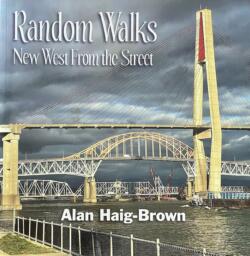 When I first saw this book available for review, I snapped it up right away. I love going for walks in New Westminster, where I live, and was eager to compare notes with another resident’s experience of the city by foot. Making it more interesting was what else the author and I share in common: born a generation apart on Vancouver Island (he in Campbell River, me in Nanaimo), famed marine writer and photographer Alan Haig-Brown and I are both migrants to the Lower Mainland who have spent a lot of time in Bangkok, married someone from Southeast Asia, and share an enduring fascination with working rivers.
When I first saw this book available for review, I snapped it up right away. I love going for walks in New Westminster, where I live, and was eager to compare notes with another resident’s experience of the city by foot. Making it more interesting was what else the author and I share in common: born a generation apart on Vancouver Island (he in Campbell River, me in Nanaimo), famed marine writer and photographer Alan Haig-Brown and I are both migrants to the Lower Mainland who have spent a lot of time in Bangkok, married someone from Southeast Asia, and share an enduring fascination with working rivers.
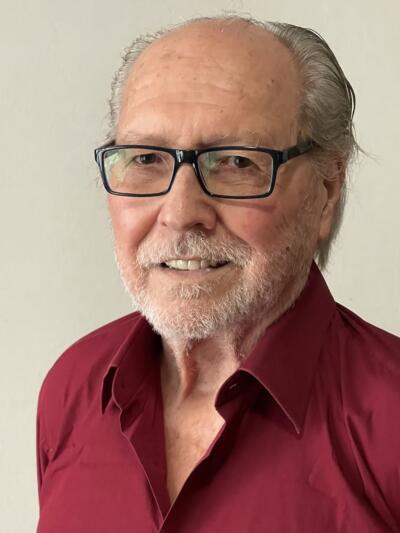
Learning all this as I cracked open this sumptuous, 172-page coffee table book, I settled in for an enjoyable browse that reinforced my decision to move to New West. Compiled with an introduction by publisher Rick Blacklaws, with whom Haig-Brown has previously collaborated (The Fraser River, 1996), this colourful sampling of street photographs breathes new life into familiar scenes while revealing some of the city’s hidden gems. Each photo appears with a brief observation about the context for the shot, some historical tidbit about the area, or a philosophical note about what the moment, subject, or location inspires in the photographer.
*
Random Walks is the happy result of pandemic isolation. In April 2020, Haig-Brown had just returned to Canada after six months in Thailand to find his country in lockdown. With his wife staying on in Bangkok, he had lots of time on his hands; like everyone else going stir crazy from social distancing protocols, he took advantage of every opportunity to step outside for some fresh air. New Westminster, a city built on a hill with streets parallel to the mighty Fraser River — and plenty of dramatic views of it — is made for walking. So he began wandering for five or ten kilometres around his home every day, taking pictures wherever he went.
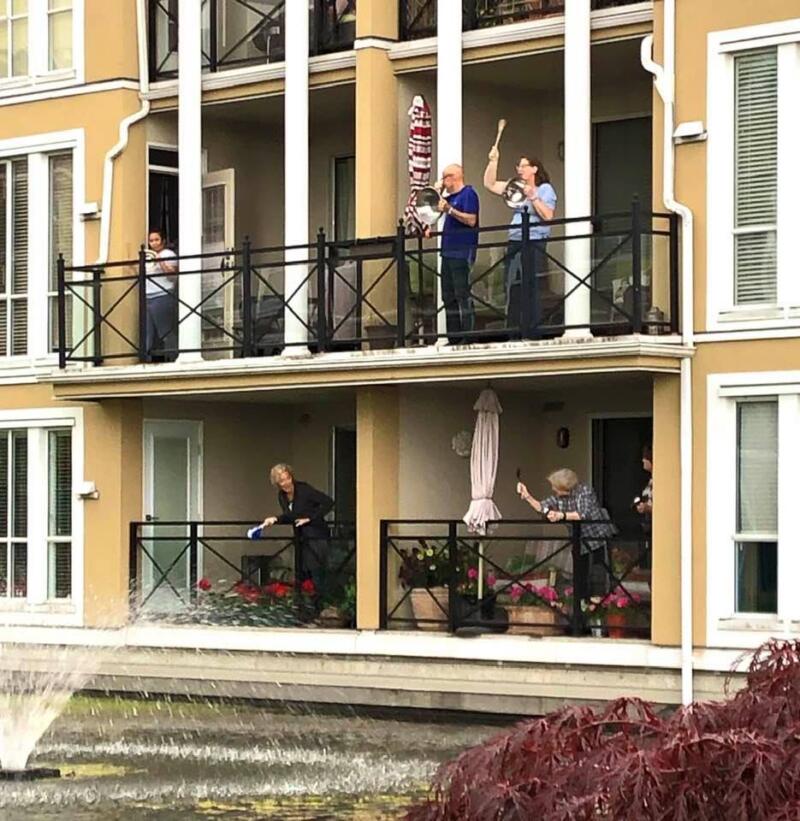
For a professional photographer with thirty-five years’ experience shooting with single lens reflex (SLR) Nikons and Canons, it’s something of a marvel that Haig-Brown took all these photos from a triple lens I-phone 12. Apart from the occasional long-distance frame that tends to be grainier (a few photos were taken across the river from his subject), these pictures are rich in composition and — shot at the highest resolution possible — look to the casual eye like they came from an SLR. Over several pages of these photos, many remarkable for the lighting and shadow that Haig-Brown exploits to maximum effect, the reader is reminded of a time in the very recent past when the world was stopped in its tracks.
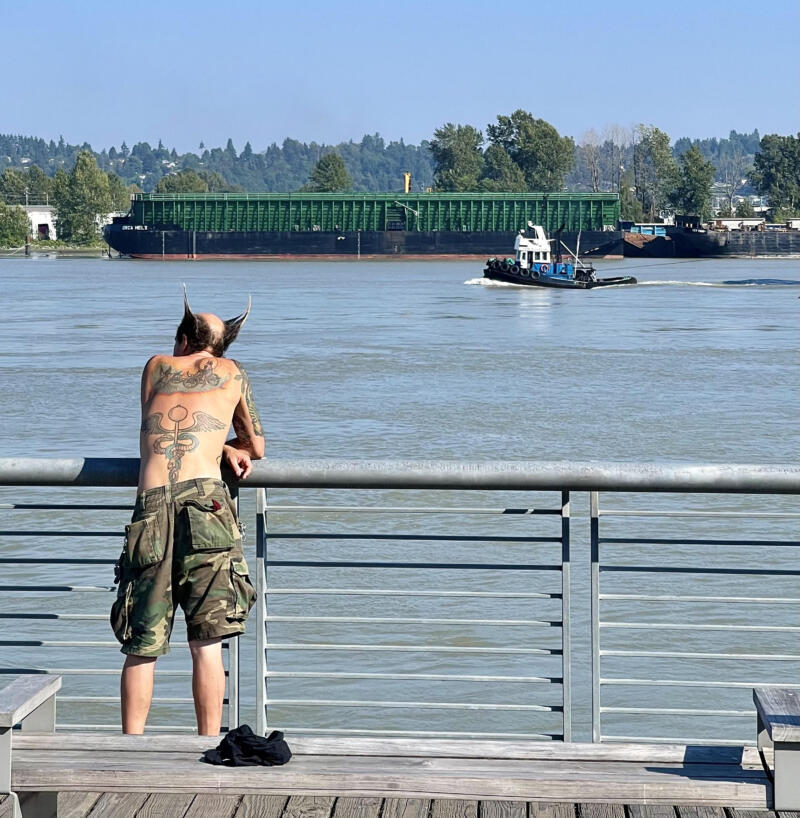
If there’s a slightly eerie quality to some of the photos, it’s less because of COVID than the fact that Haig-Brown’s subject is a city very much haunted by the ghosts of its past. A month or two before Random Walks was published in the Fall, the outgoing mayor — in a gesture toward reconciliation with Indigenous peoples — convinced council to pass a motion to rebrand New West and phase out the “Royal City” nickname that has been its trademark since the city was first surveyed by the Royal Engineers, named by Queen Victoria, and established as BC’s first capital in 1859.
Haig-Brown is well aware of New West’s colonial history — the good, the bad, and the ugly — and captures many of its remnants during his wanderings. From the Woodlands Memorial Garden in Victoria Hill, a respectful but disturbingly sad tribute to the 3,300 marginalized residents who died at the infamous mental health institution, to Poplar Island, which the Qayqayt First Nation has been trying to return to reserve status (reclaiming the place from its dark legacy as a primitive quarantine for the smallpox-infected Indigenous population), many of these images reflect a city that is slowly coming to terms with its past.
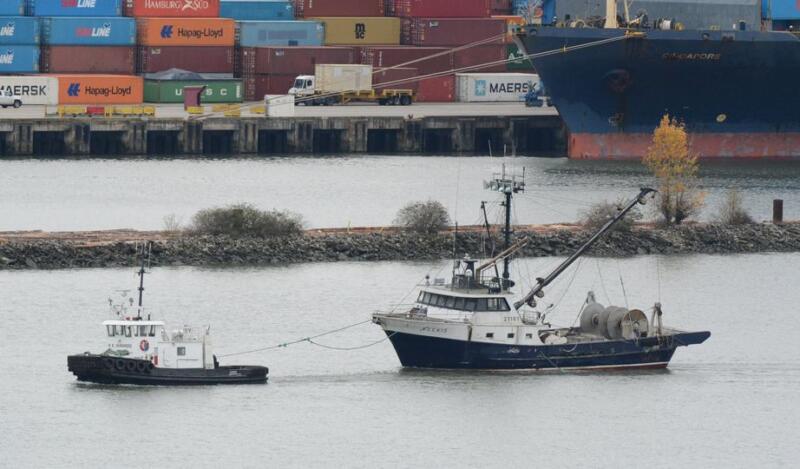
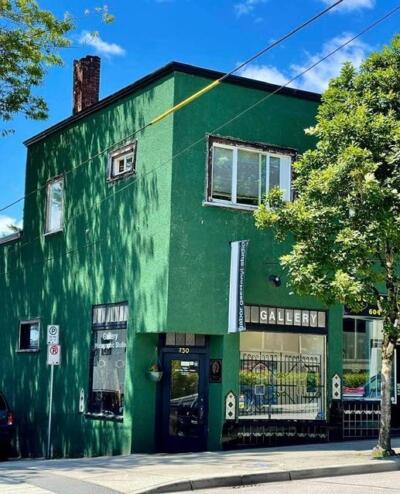
“Colonization and its stalwart principals, like Judge Begbie, worked diligently to obliterate any trace of the Indigenous caretakers of the land,” Haig-Brown writes in the Preface, noting that city council in 1859 sought to expel Indigenous people, including those of Qayqayt village on Front Street, from the downtown business and residential districts. By 2021, having removed a statue of the infamous judge from the courthouse, a more enlightened council acknowledged that colonization had rendered Indigenous histories and connections to the land invisible in New West. “Sadly,” adds Haig-Brown, “this ‘invisibility’ remains true of the graphic representation of the People in this collection of photos.”
There is civic irony here. In 2014, the city made a big deal of
commemorating a heart-warming moment from the Second World War that happened at Eighth and Columbia in 1940 and was captured in a world-famous Vancouver Province photo. In Hyack Square, just metres from where the photo was taken, a statue representing that image—of a five-year-old child running to his father, who’s marching in a column of soldiers heading off to Europe—is tackily lit up at night for all the world to see. And yet to this day, public space in New West continues to lack prominent displays or representations of Indigenous history and culture, while the Begbie name—as Haig-Brown reminds us—remains on a street and a bar.
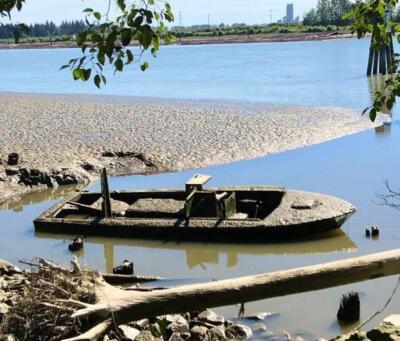
Random Walks captures New Westminster’s proud legacy as a major industrial hub of the Lower Mainland economy, from its rail connections and warehouses to its shipyards, cranes, and bars. Haig-Brown captures a good deal of that history from the banks of the Fraser, highlighting the tugboats and container ships that dominate the working river, along with those classic paddle wheelers that have become tourist attractions. Fishing boats are well represented here, from the skeletal remains of abandoned vessels and a few recovery projects to the gill-netter of a sockeye salmon fisherman whose grandparents were victimized by Canada’s wartime treatment of Japanese-Canadians.
The book also reminds the reader of the city’s contemporary hipster appeal. From the highly popular Cap’s Bicycles and Fratelli’s bakery in Sapperton to the variety of international cuisine (Lebanese, Balkan, Filipino) to be found along 12th Street, the funky shops and Old Crow café on Front Street, and the wedding boutiques on Columbia Street, Haig-Brown’s eye hints at a younger, more diverse demographic beginning to reshape New West. There are also several images of classic heritage homes near Queen’s Park and in other districts, many of them restored to their former glory.
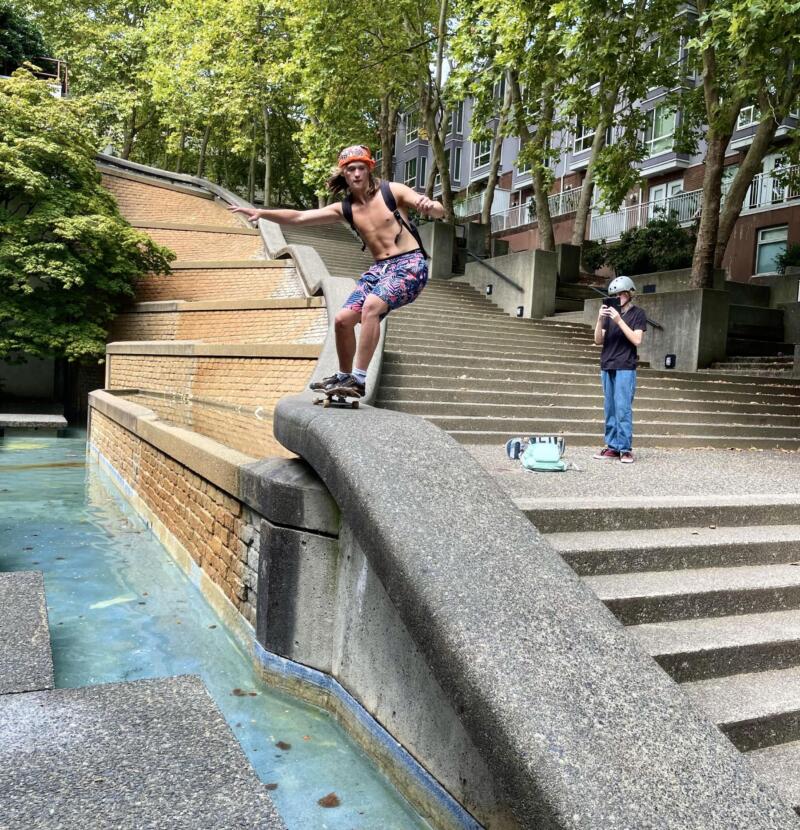
One of Haig-Brown’s favourite subjects is local residents simply enjoying their favourite chill-out spots. His I-phone captured people seeking solitude — or playing the tuba — amid the giant trees of Queen’s Park, taking their child for a dip in the Brunette River, fishing or displaying their art on one of the many walkways lining the Fraser, or shooting basketball hoops at Pier Park. One image of a shirtless skateboarder, rolling down the concrete railing of a stairway lining the courthouse, had me chuckling at Haig-Brown’s reference to Naga snake staircases in Thailand: in my mind, this young fellow was immediately transported to one of those railings at Wat Doi Suthep in Chiang Mai — where he would have been immediately arrested for blasphemy.

*
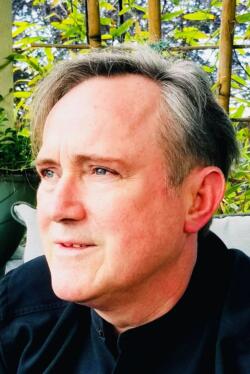
Daniel Gawthrop has lived in New Westminster since 2014. He is the author of a forthcoming novel, Double Karma, which will be published in Spring 2023 by Cormorant Books, and five non-fiction books including The Trial of Pope Benedict: Joseph Ratzinger and the Vatican’s Assault on Reason, Compassion, and Human Dignity (2013), and The Rice Queen Diaries (2005), both published by Arsenal Pulp Press. Visit his website here. Editor’s note: Daniel Gawthrop has recently reviewed books by Anthony Varesi, Corey Hirsch, Harley Rustad, Karen Moe, Keith Maillard, and Hassan Al Kontar for The British Columbia Review.
*
The British Columbia Review
Publisher and Editor: Richard Mackie
Formerly The Ormsby Review, The British Columbia Review is an on-line book review and journal service for BC writers and readers. The Advisory Board consists of Jean Barman, Wade Davis, Robin Fisher, Barry Gough, Hugh Johnston, Kathy Mezei, Patricia Roy, Maria Tippett, and Graeme Wynn. Provincial Government Patron (since September 2018): Creative BC. Honorary Patron: Yosef Wosk. Scholarly Patron: SFU Graduate Liberal Studies.
“Only connect.” – E.M. Forster
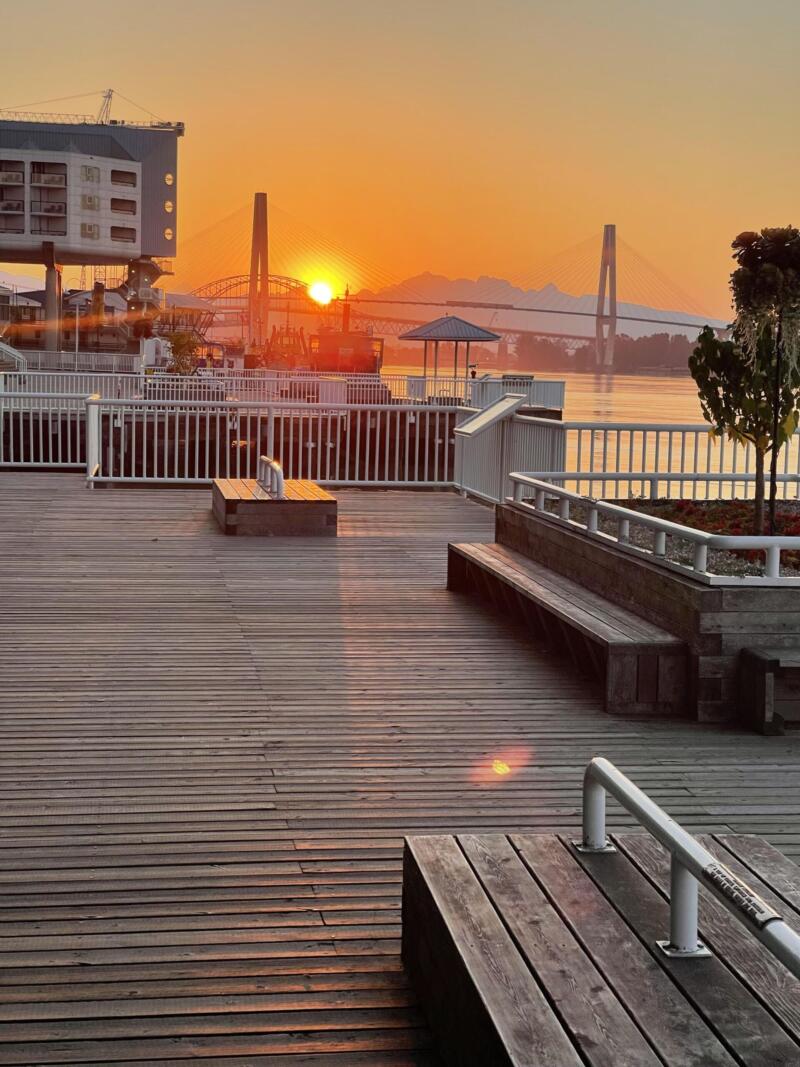
3 comments on “1701 Wandering the haunted city”